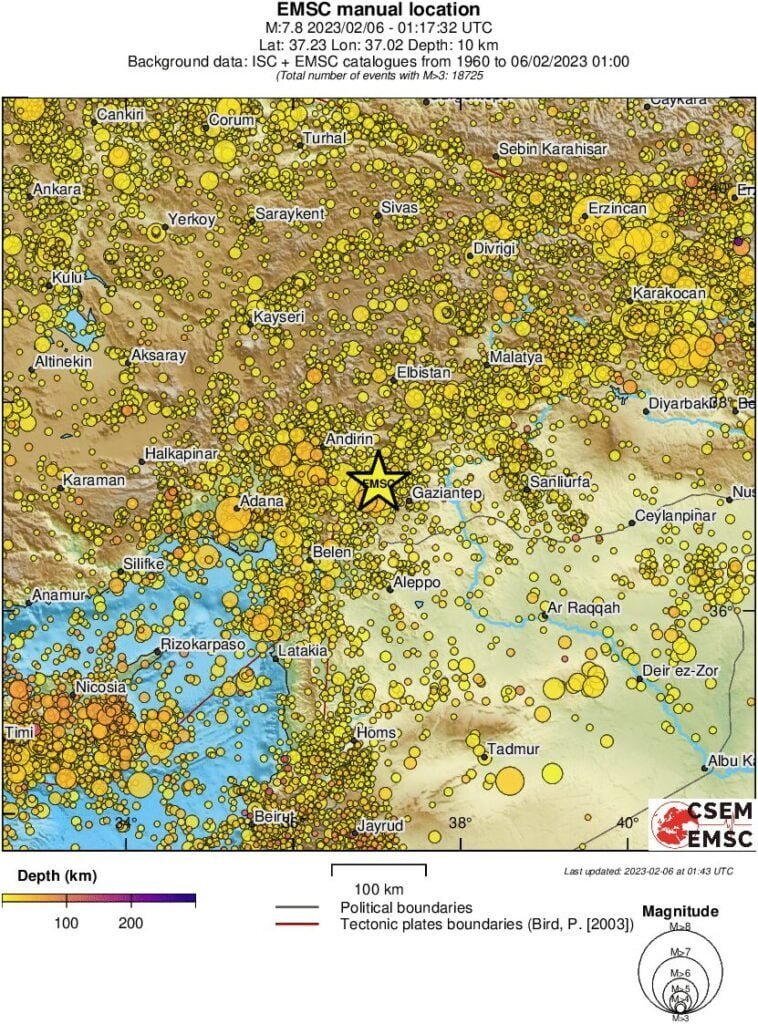A powerful earthquake registered by the USGS as M7.8 hit the highly populated Turkey – Syria border region at 01:17 UTC (04:17 local time) on February 6, 2023. The agency is reporting a depth of 17.9 km (11.1 miles). EMSC reports M7.8 at a depth of 10 km (6.2 miles). Numerous moderate to very strong aftershocks were registered, including M6.7 at 01:28 UTC.
- A Red alert for shaking-related fatalities and economic losses was issued
- As 0f 07:20 UTC, more than 500 people have been killed — at least 284 in Turkey and 237 in Syria
- Thousands of people have been injured and many are still trapped under the rubble
- Rescue operations are in progress
- This is the strongest earthquake to hit Turkey since 1939 and the second-strongest since the Northern Anatolia M7.8-8.0 earthquake in 1668
The epicenter was located about 26.2 km (16.3 miles) E of Nurdağı (population 12 827), 33.6 km (20.9 miles) WNW of Gaziantep (population 1 065 975), and 46.6 km (29 miles) NNW of Kahramanmaraş (population 376 045).
70 000 people are estimated to have felt violent shaking, 540 000 severe, 4 850 000 very strong 12 252 000 strong and 21 316 000 moderate.
The USGS issued a Red alert for shaking-related fatalities and economic losses. High casualties and extensive damage are probable and the disaster is likely widespread. Past red alerts have required a national or international response.
Estimated economic losses are 0-2% GDP of Turkey.
Overall, the population in this region resides in structures that are extremely vulnerable to earthquake shaking, though some resistant structures exist. The predominant vulnerable building types are unreinforced brick masonry and low-rise nonductile concrete frame with infill construction.
Recent earthquakes in this area have caused secondary hazards such as landslides that might have contributed to losses.
According to reports received by 07:20 UTC, more than 500 people were killed — 284 in Turkey and 237 in Syria.
Thousands of people have been injured.
Dozens of people are still trapped under the rubble and the death toll is expected to rise.
This is the strongest quake to hit the Turkey – Syria border on record.
It is also the strongest earthquake to hit Turkey since the Erzincan M7.8 earthquake on December 27, 1939 (more than 33 000 fatalities and close to 100 000 injured), and the second strongest since the Northern Anatolia M7.8-8.0 earthquake on August 17, 1668 — the most powerful earthquake in Turkey’s recorded history (~8 000 fatalities).
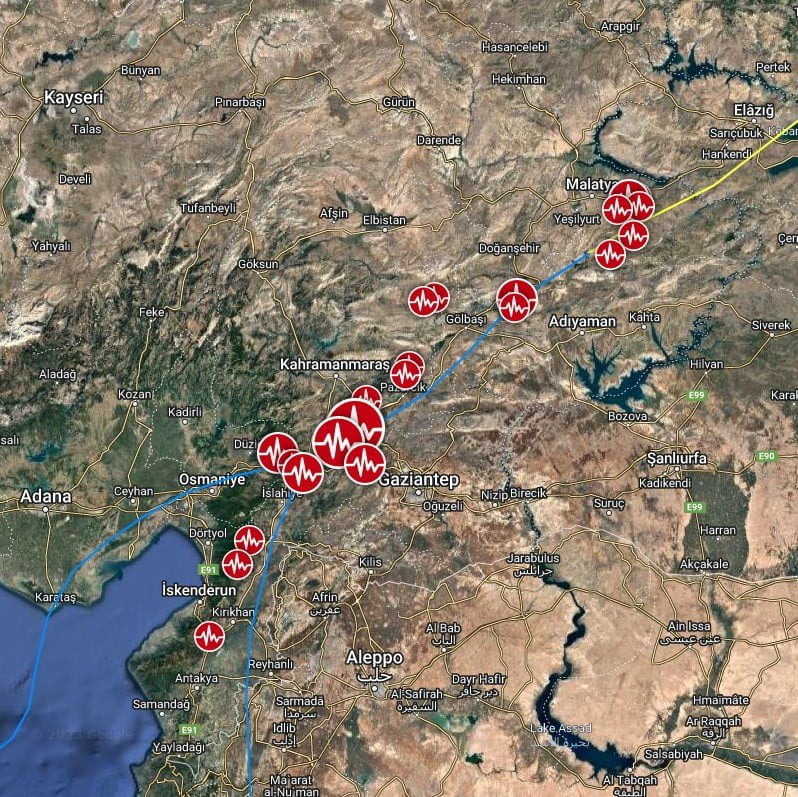
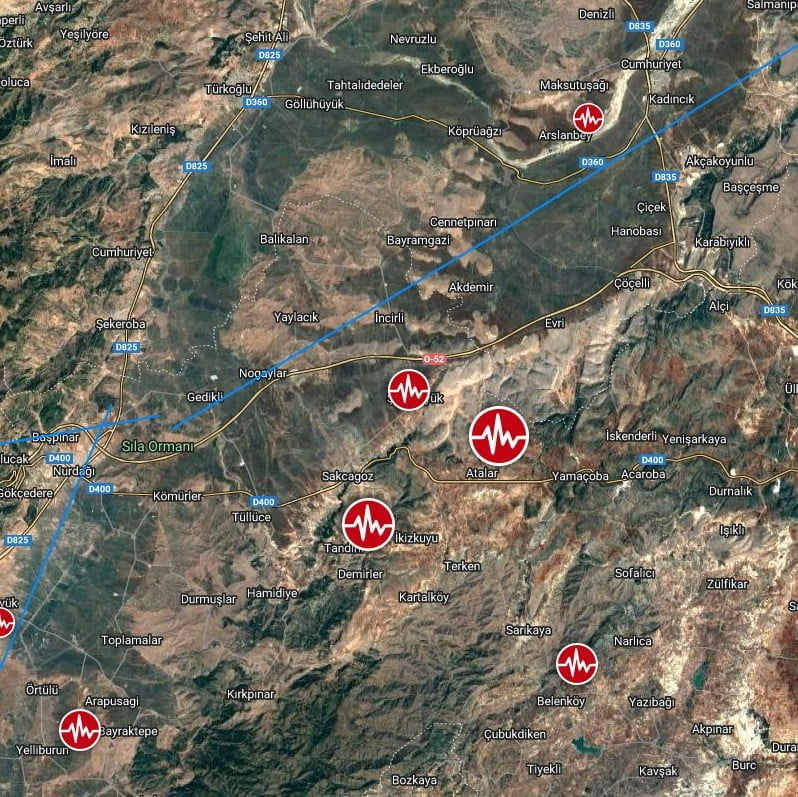
Estimated population exposure to earthquake shaking
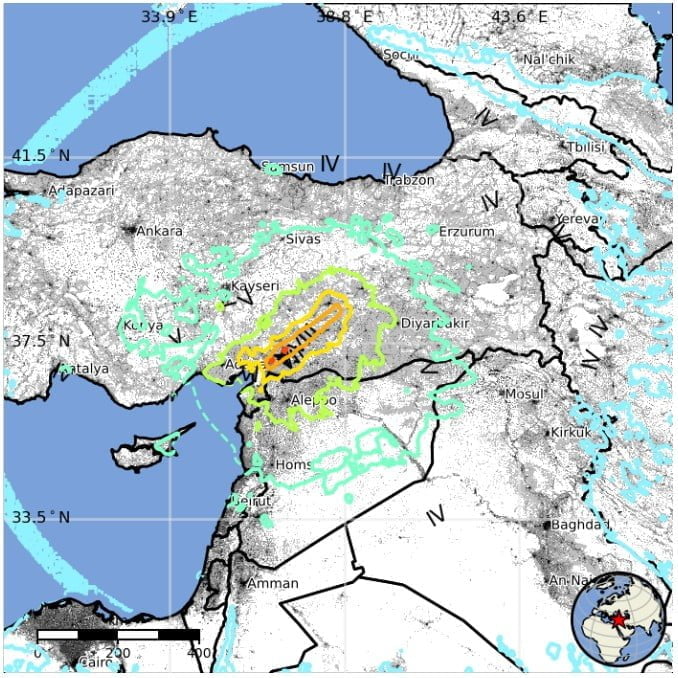
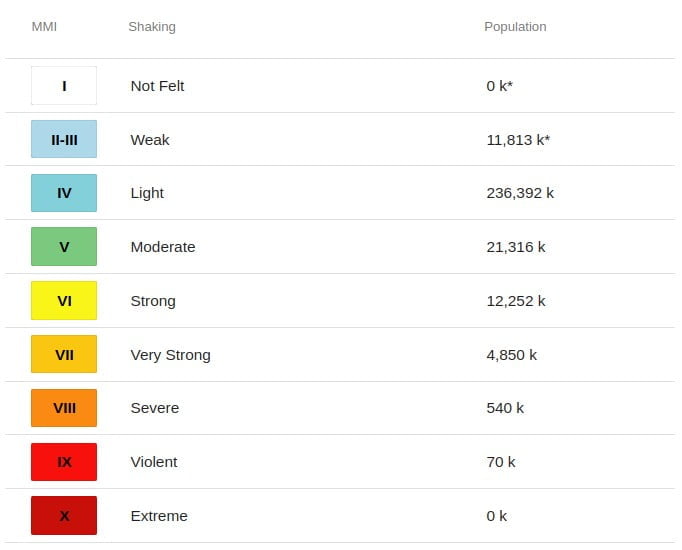
Selected cities exposed
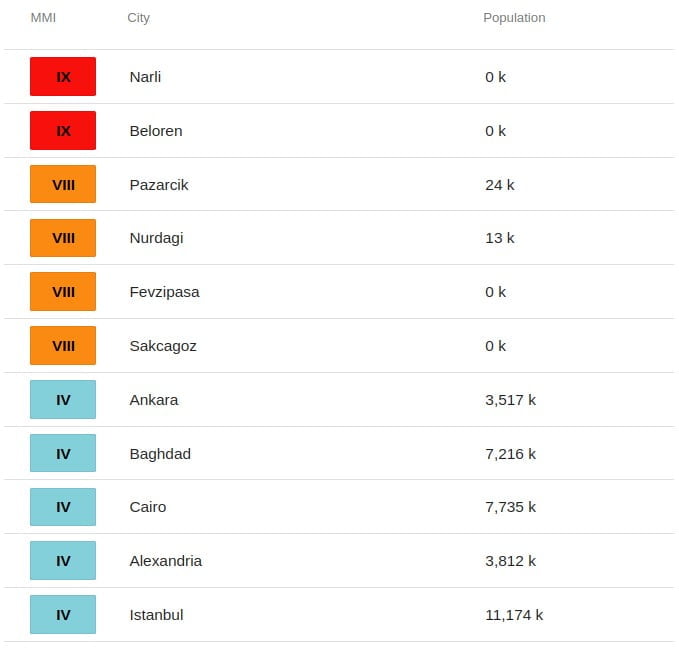
Regional seismicity
